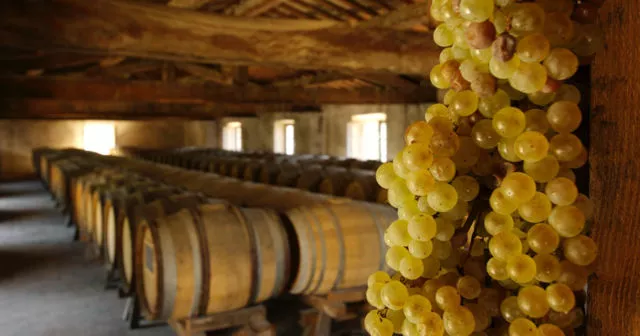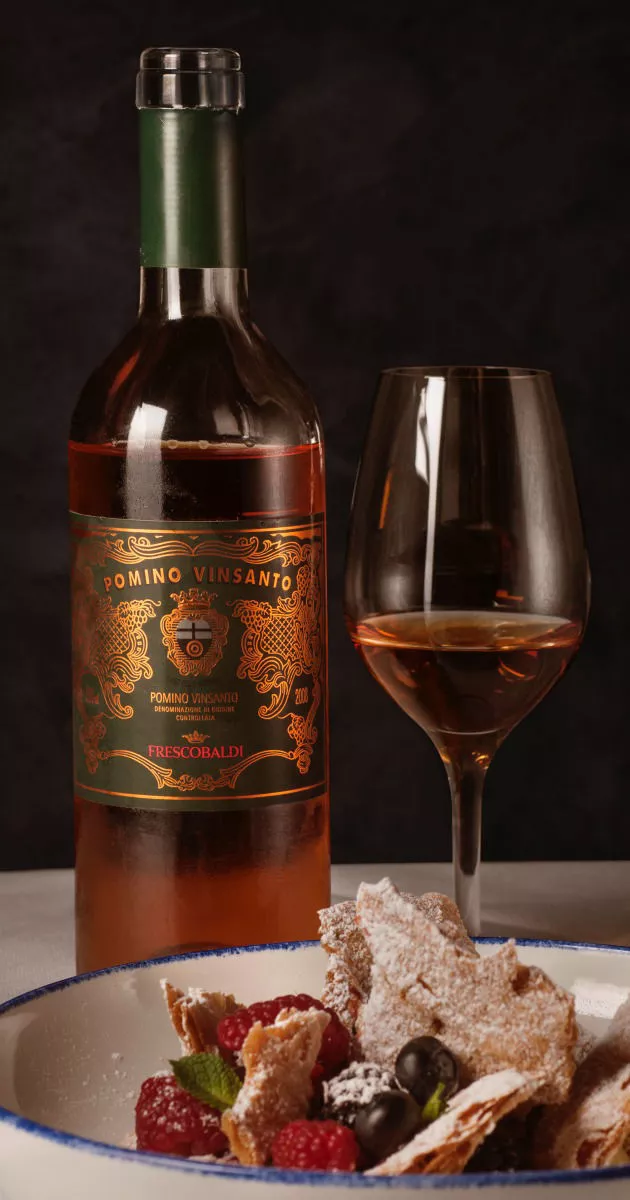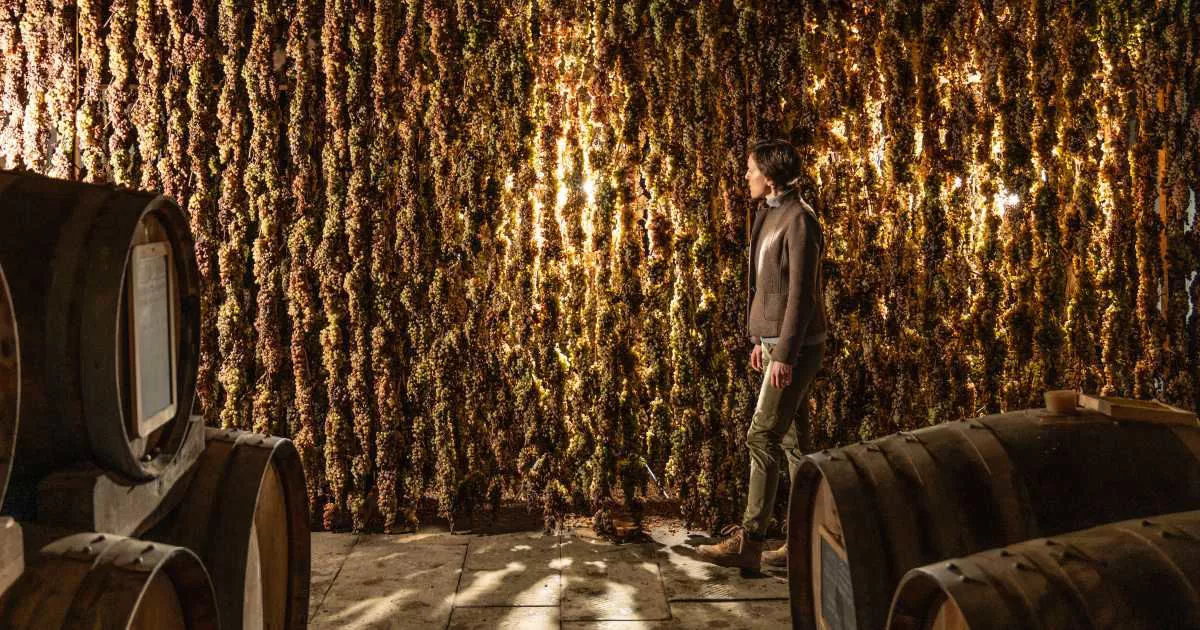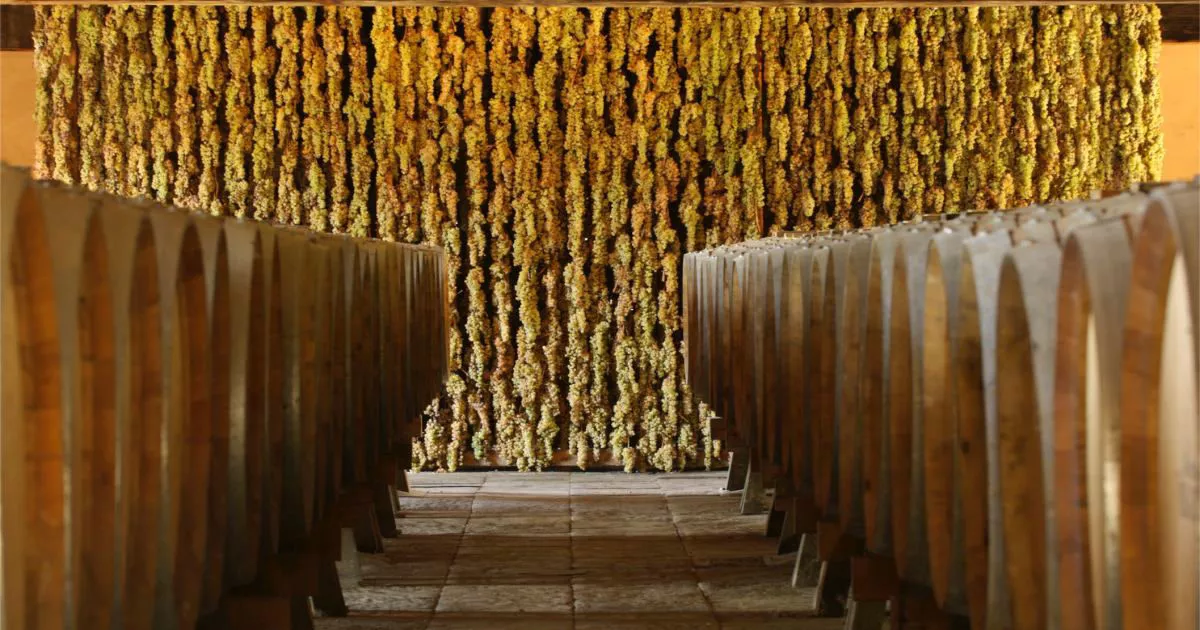
Vin Santo wine: What it is and how to make it
In the Tuscan wine landscape, but also among Italian wines, Vin Santo holds a role of great historical and cultural value. This product, steeped in tradition, has roots that intertwine with conviviality and family customs. In the past, every family had their particular recipe for Vin Santo, creating a wine more or less sweet depending on the treatment of the grapes. But one thing remains constant: the taste of the raisin wine, marked irrevocably by the withering of the grapes. Let's delve deeper into the origins of this product and the way it is still consumed today.
What is Vin Santo?
Vin Santo is a wine derived from the withering of grapes. The origin of its name is shrouded in a veil of mystery, with different hypotheses trying to explain its roots. Some believe that the name is linked to its use as the wine used during masses, given its prestigious place in Tuscan oenology since the Middle Ages. Another theory, dating back to 1349, traces the name back to an ecumenical council convened in Florence by Eugenius IV. During a break in the proceedings, the Greek patriarch Bessarion compared the wine to that of the island of Xantos, hence the mispronunciation of Vin Santo. From that moment, Vin Santo became the wine celebrated in Tuscany.
The importance of Vin Santo in Tuscan culture
Vin Santo is a symbol of friendship and hospitality. It is the wine offered to guests, the protagonist of convivial moments. An example of this bond is the transhumance of sheep, a practice that took place in Tuscany until the 1930s. During this migration, shepherds moved from north to south, stopping at farms that awaited them with Vin Santo, thus celebrating the arrival of the sheep that fertilised the lands. In Tuscany, three casks (wooden containers in which Vin Santo is made to rest) of this wine were a common asset, owned not only by farmers but also by those who worked the land without owning a vineyard.
How is Vin Santo made?
The production of Vin Santo differs from the production of wine due to its unique process: the grapes are left to wither, thus changing their characteristics. This process causes a strong transpiration of water, concentrates the liquids inside the grape, and creates the peculiar taste of Vin Santo. Subsequently, the wine goes into small wooden containers called casks, where it rests for three years. Traditionally, each family owned three casks and opened one per year, renewing one at each harvest. This sweet raisin wine is usually served at the end of a meal, but it is also traditionally used to welcome guests.
Which grapes are used for Vin Santo?
The aspect of the grapes used in Vin Santo is fascinating. Normally, varieties that have not been widely used in wine production are used, as they often lack intense fresh aromas, which are generally desirable in white wines. Examples of such aromas include the fresh and youthful notes found in Sauvignon Blanc.
This is why some grape varieties, which were little used in winemaking in the past, have found new life in Vin Santo. An example is Trebbiano, an ancient grape variety that was once used in the Chianti blend, but which was subsequently eliminated and almost completely replaced. Today, although the cultivation of Trebbiano has decreased, this variety is much appreciated in Vin Santo.
Trebbiano is particularly suitable for Vin Santo thanks to its hard and resistant skin, which prevents the formation of mould during the withering process. This makes Trebbiano a reliable choice for vintages in which Vin Santo is to be produced. The same can be said for San Colombano, another grape variety typically used in Vin Santo.



What are the characteristics in the production of Vin Santo that differentiate it from other liquors?
First of all, it is important to underline that "liquor" is not an adequate definition for Vin Santo. Usually, with "liquor" we refer to alcoholic beverages or products that exceed 40 degrees, such as grappa. Vin Santo, on the other hand, is a wine obtained from the withering of grapes. Thanks to this process of concentration, due to the evaporation of water, Vin Santo reaches an alcohol content of 14-15 per cent.
Today, only wines that belong to a Designation of Origin can be defined as Vin Santo. For about 30 years now, most of these designations come from Tuscany, which boasts many varieties of Vin Santo, such as Vin Santo del Chianti, Vin Santo di Pomino, and many others. With rare exceptions, the term Vin Santo is used only in Tuscany.
Vin Santo and Cantucci: a historic pairing
The most traditional pairing of Vin Santo is with sweets. Typically, it is accompanied by Tuscan biscuits called "cantucci", hard sweets biscuits filled with almonds and characteristically crescent-shaped. The advice to best appreciate Vin Santo is to taste the wine first and only afterwards dipping the cantucci, in this way you can fully appreciate its organoleptic properties.
Ideal serving temperature for Vin Santo
Traditionally, Vin Santo is tasted at a serving temperature of 8 and 12°C. We recommend tasting it at a higher temperature, because the lower the temperature, the more the aromas close. At 8°, you still perceive the taste of passito because it is a strong taste that comes from the withering of the grapes, but at the same time, some aromas, if the Vin Santo is really interesting, would be lost. For this reason, we recommend staying on the upper limit of this range.
Frescobaldi's Vin Santo
Many Tuscan companies, especially the historic ones, always produce a Vin Santo. Usually, the name Vin Santo is always accompanied by the name of one of the estates or the company that produces it. Frescobaldi has chosen two different paths: one linked to a very classic and typical Vin Santo called Quaranta Altari (the origin of the name is ancient, dating back to centuries ago when libations led the church to request restorations in the churches of Montespertoli "I Quaranta altari"). It is a typical Vin Santo based on Trebbiano.
The second path undertaken by Frescobaldi is represented by the Pomino Vin Santo. Produced in the Castello di Pomino, this Vin Santo benefits from an almost mountainous environment, with vineyards immersed among the fir trees and at an altitude of about 700 metres. The result is a Vin Santo of great historical significance, made mainly with Chardonnay and Trebbiano grapes. The process of withering the grapes deserves special mention: these are hung on wooden trellises in the vinsanteria and left to wither for several months, starting from October. The practice of wine production, essential for crafting Vin Santo, also presents a captivating scenic spectacle.
*Reference bibliography on the origin of the name: Il libro del Vin Santo by Giacomo Tachis, Bonechi publisher
info@frescobaldi.it |+39 055/27141